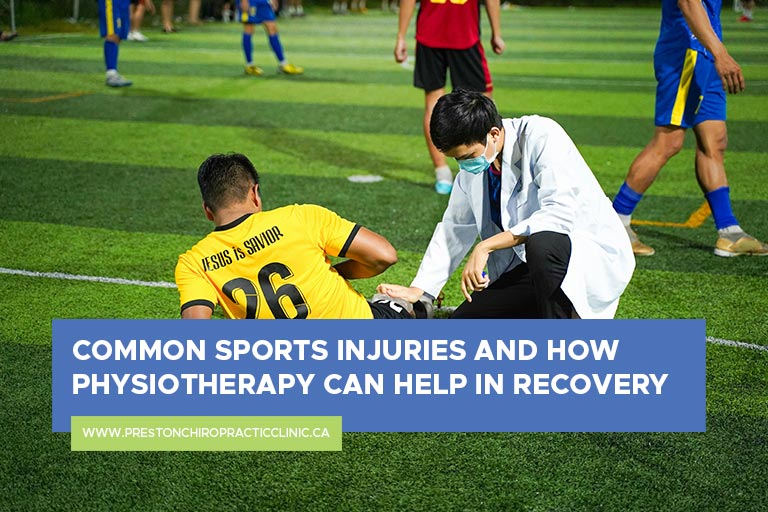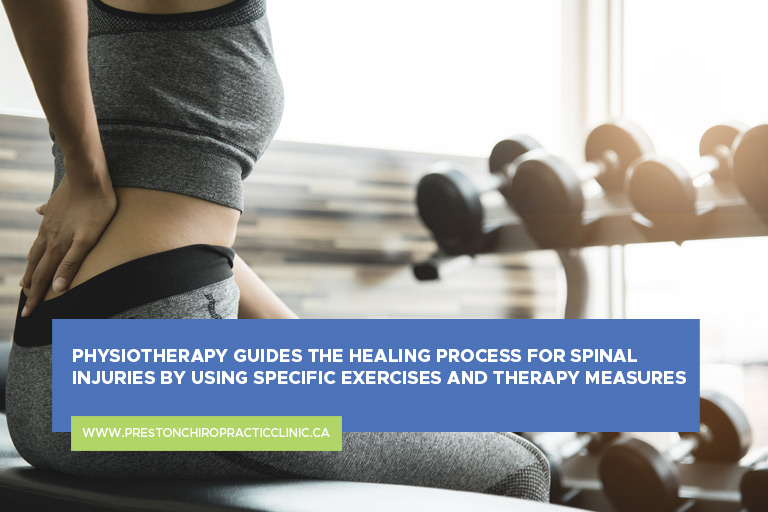
Common Sports Injuries and How Physiotherapy Can Help in Recovery
Engaging in sports and being physically active can provide you with much satisfaction, physical fitness, mental well-being, and a sense of camaraderie. However, the physical demands of sports can sometimes lead to injuries. Sports injuries are an unfortunate but common occurrence in the world of athletics. Whether you’re a professional athlete or just like to play sports for fun, the risk of getting injured is always present. These injuries can be anything from little sprains and strains to more serious issues like torn ligaments and fractures.
Fortunately, there’s a solution – physiotherapy. This approach to rehabilitation can significantly aid in the recovery process, helping individuals regain strength, mobility, and function. While no one plans to get injured, understanding the common types of sports injuries and the role of physiotherapy in the injury recovery process can make a significant difference in your rehabilitation journey. In this article, we will explore the various common sports injuries and how physiotherapy can be crucial in helping athletes get back in the game.
Types of Sports Injury
In sports, injuries can be as much a part of the game as the thrill of victory. From minor sprains to severe fractures, understanding the different types of sports injuries is important for athletes and enthusiasts alike.
- Sprains and Strains
Sprains and strains are some of the most common sports injuries. A strain involves injury to a muscle or tendon, while a sprain results from a stretched or torn ligament that joins one bone to another. Sudden movements, overexertion, or improper techniques during sports activities often cause these injuries. Physiotherapy can assist in rehabilitation by employing techniques such as strengthening exercises, joint mobilization, and manual therapy to promote healing and restore normal function.
- Tendonitis
Tendonitis, also known as tendinitis, is the inflammation of the tendon, which joins muscle to bone. It may result from overuse or repetitive motions, commonly seen in sports like tennis, golf, and running. Physiotherapy plays a vital role in managing tendonitis by incorporating exercises to strengthen the affected area, minimizing inflammation while improving the range of motion.
- Fractures and Dislocations
Fractures and dislocations are more severe sports injuries that require immediate medical attention. A fracture involves a broken bone, while a dislocation occurs when two bone surfaces lose contact at a joint. Physiotherapy is essential after the initial treatment to aid in the recovery process. It reduces pain, swelling, and stiffness while gradually restoring function and strength to the injured area.
- Knee Injuries

The knee is a vulnerable joint in many sports and can be susceptible to various injuries, such as ligament tears (e.g., ACL tears), meniscus tears, and patellofemoral pain syndrome. Physiotherapy is a cornerstone in the rehabilitation of knee injuries. It involves targeted exercises to strengthen the muscles surrounding the knee, improve joint stability, and enhance range of motion, helping athletes regain their agility and performance.
- Shoulder Injuries (Rotator Cuff Tears)
Shoulder injuries, mainly rotator cuff tears, are common in sports that involve overhead movements, like baseball, swimming, and tennis. Physiotherapy for shoulder injuries includes exercises to strengthen the rotator cuff muscles, improve shoulder stability, and enhance flexibility. These interventions aim to reduce pain and restore full shoulder function.
- Back Injuries (Herniated Discs)
Back injuries, such as herniated discs or muscle strains, can be debilitating for athletes. Physiotherapy for back injuries focuses on alleviating pain, restoring spinal mobility, and strengthening the muscles that support the spine. This comprehensive approach aids in the gradual recovery of athletes, allowing them to resume their activities safely.
- Ankle Sprains
Ankle sprains are a common sports injury that often results from the foot rolling inward or outward, causing damage to the ligaments. Physiotherapy helps reduce swelling, improve ankle stability, and promote proper healing through exercises and manual therapy techniques.
Severe Sports Injury
While the injuries mentioned above are relatively common, some athletes unfortunately face more severe sports injuries that require extensive rehabilitation. These can include the worst injuries in sport, where the road to recovery demands physical resilience and a steadfast mental attitude.
- Torn ACL
A torn anterior cruciate ligament (ACL) is a severe knee injury that typically requires surgical intervention. Post-surgery physiotherapy is crucial in rebuilding the knee joint’s strength, stability, and range of motion. It involves progressive exercises and a structured rehabilitation program to ensure a successful recovery.
- Severe Concussions
Concussions are traumatic brain injuries that can have long-lasting effects. Physiotherapy for severe concussions focuses on addressing associated symptoms like dizziness, balance issues, and cognitive deficits. Specialized exercises and therapies are designed to help athletes gradually regain their mental and physical functions.
- Torn Ulnar Collateral Ligament
A torn ulnar collateral ligament (UCL) in the elbow is a significant concern for baseball players. Physiotherapy after UCL reconstruction surgery helps athletes regain elbow strength, stability, and throwing mechanics. It includes targeted exercises and a gradual return-to-throwing program.
- Spinal fracture
A spinal fracture is a severe spinal injury that requires immediate medical attention. Physiotherapy, in such cases, aims to minimize pain, improve mobility, and enhance the overall quality of life for the athlete. It often includes exercises and manual therapy tailored to the patient’s specific needs.
- Femur and Tibia Fracture
Fractures of the femur (thigh bone) or tibia (shin bone) can be debilitating. Physiotherapy focuses on strengthening the affected limb, improving mobility, and assisting with weight-bearing activities. Rehabilitation programs are individualized to ensure a safe and effective recovery.
Even the most skilled and experienced athlete can get injured. However, the road to recovery doesn’t have to be daunting. Recognizing the benefits of sports physiotherapy, a vital rehabilitation tool can help athletes regain their strength, mobility, and function after sports injuries. Whether it’s a common sprain or a severe injury like a torn ACL or spinal fracture, physiotherapy plays a crucial role in the journey back to peak performance.
If you are dealing with a sports injury, don’t hesitate to seek the help of professionals from a physiotherapist in Cambridge. Remember, the road to recovery may be challenging, but with the proper guidance and dedication, athletes can return stronger than ever.
For comprehensive physiotherapy services and expert care, contact Preston Chiropractic & Physiotherapy Clinic at (519) 653-7139. Don’t let a sports injury keep you on the sidelines – take the first step towards recovery today!
BY: PrestonchroAdmin
Blog
COMMENTS: No Comments

